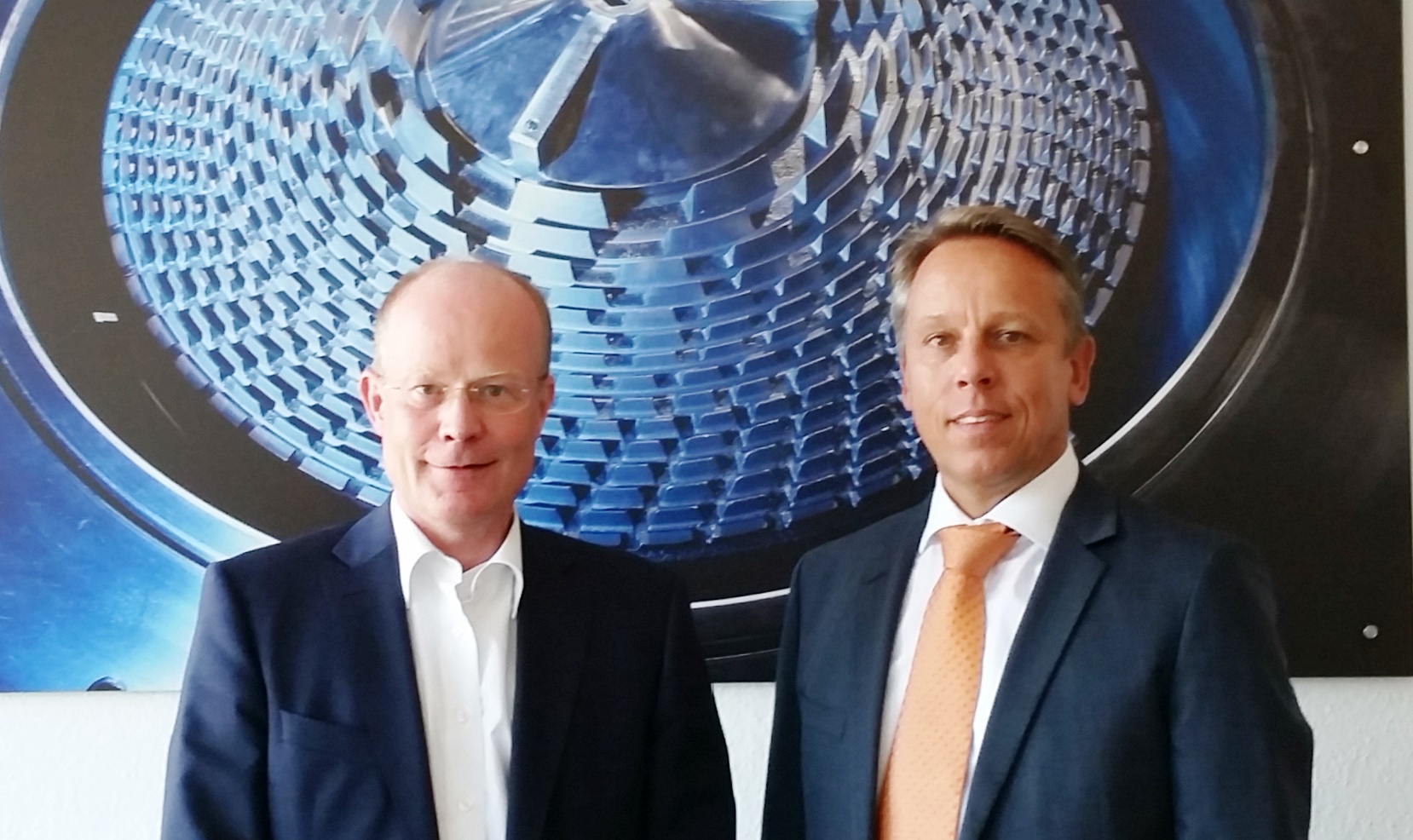
Everything must become recyclable
• Stipulated recycling quotas are realistic
• Consumers cannot deliver mono-fraction separation
• Separation of composite materials will be possible
The EU wants to enforce circular economy for plastics and stipulates recycling quotas. Do you think a quota of 30 per cent is realistic?
Wissing: It can definitely be achieved. The corresponding technology already exists. Regulations regarding homogeneous manufacturing should also considerably increase recyclability, and for this reason, we think that the 30 per cent recycling quota by 2030 is realistic. However, our long-term goals for recyclability must exceed the 30-per cent mark by far, and we are certain to achieve this.
Wagner: In the field of post-industrial applications, there have already been high recycling quotas for a long time, for example for window profiles or floor laminates. Now there is new demand above all from the field of post-consumer waste.
Good recyclates are often more expensive than virgin material due to recycling costs. Will they still be used?
Wagner: For a long time, the idea prevailed that the recycling business greatly depends on the oil price. The higher the oil price, the more attractive recycling and vice versa. Meanwhile this is only partially true, because profitability is no longer the only parameter. For several years, the entire sector has been under public pressure, including plastics manufacturers. Today all enterprises active in the supply chain for plastics must present themselves as sustainable companies. And that means that everything must be recyclable. It is no longer the price alone that matters.
Should collection systems be further improved?
Wagner: From our point of view, this would be useful. If the material that gets here is better pre-sorted, it will be easier for us and the end user. But we should remain realistic. One hundred per cent sorting accuracy cannot be achieved, even with the most sophisticated collection systems. In the case of post-consumer waste, we will not be able to eliminate unwanted foreign matter from the material to be recycled. Consequently, we are trying to design our technology in such a way that our systems take over at least part of the separation process.
Wissing: Unlike industrial plastic waste, post-consumer waste must be sorted by the consumer. We do not think that consumers can sort absolutely homogeneously. What is missing is a kind of labelling of all the different materials that the consumer can easily and unambiguously recognise, and, after all, the number of necessary collection bins would not be realisable. Smallest impurities would later require special technical equipment anyway. It would not really be relevant if you had an impurity rate of two or ten per cent.
Do you think it feasible to separate composite materials in future?
Wissing: This is a future scenario I can well imagine even if it seems very difficult at present. But what will be possible much earlier is to recycle composite materials. There are already research projects underway working on techniques to shred carbon-fibre reinforced materials and to prepare them in such a way that they can be pressed again into carbon-fibre parts. We are currently considering participation in such a project.
Wouldn’t these parts lose their stability, a property which people particularly appreciate?
Wissing: People also appreciate the low weight of this material. There are many applications making fewer demands on stability but more on weight. It still has to be tested how much stability is lost through recycling. But basically, such a composite material can enter the cycle again.
Could CFK recycling become a new application at Pallmann sooner or later, leading to additional business?
Wagner: We are giving this considerable thought. At any rate, CFK recycling requires completely new technologies. We have already noticed at an early stage that these materials take our machines to the limit. An important factor for all shredding processes is wear. In tests we have found that these composite materials cause enormous wear. Then we discovered non-contact separation and shredding procedures. This could be a promising approach.
In some Asian countries, environmental awareness is rising and circular economy is being discussed as an option. Will this be a business opportunity?
Wissing: We have an export rate of over 80 per cent. Our machines and systems are above all exported to European and North American countries, where high demands are made on technology. In Asia this is not yet the case. Indonesia is currently passing a law stipulating that waste must be recycled and no longer dumped into the sea. Theoretically, this would open up new export opportunities. There technology is less sophisticated and consequently less expensive machines will be adopted. Should these countries require more advanced technology, we would be ready.
—————–
In our world, plastics are indispensable. The downside is the littering. Carelessly discarded plastics products condense to form thick carpets, not just on rivers and seas, but also on land. A complete circular economy could prevent this evil and put the focus back on the benefits of plastics. In order for this to be a success, we all need to work together: processors, raw material manufacturers, mechanical engineers and recyclers, but also brand owners, end consumers and politicians.
VDMA will shine the spotlight on circular economy at the leading K 2019 trade fair in Düsseldorf in October and show how closed loops can work effectively. Throughout the process, stakeholders will be having their say in a series of interviews in the run-up to this international industry event.

About VDMA Plastics and Rubber Machinery
More than 230 companies are members of the association, covering more than 90 percent of the industry’s production activities in Germany. Ten percent of our member companies come from Austria, Switzerland and France. The German member companies represent sales of EUR 7 billion in core machinery and EUR 10 billion including peripheral technology. Every fourth plastics machine produced in the world comes from Germany; the export rate is 70 percent. Ulrich Reifenhäuser, Member of the Management Board of the Reifenhäuser Group, is the chairman of the association.